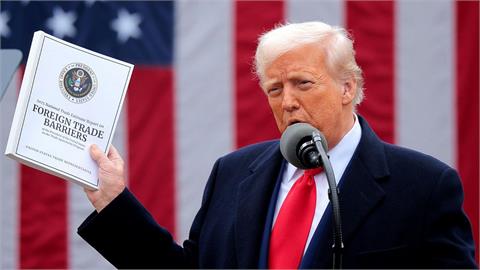Global stocks tumbled for a second day on Friday as U.S. President Donald Trump's sweeping tariff plans sowed fears about a global recession, with the sell-off deepening after China said it would impose additional levies of 34% on American goods.
Oil prices dropped as investors fretted about global growth and rushed towards the safety of government bonds and the Japanese yen, while traders ramped up their bets on steep rate cuts from the Federal Reserve and other major central banks.
Trump on Wednesday slapped a 10% tariff on most U.S. imports and much higher levies on dozens of countries, erecting the steepest trade barriers in more than 100 years. China's response in kind on Friday confirmed investors' worst fears that a full-blown global trade war is under way.
"The market is doing one thing: pricing in a global recession," said George Saravelos, global head of FX research at Deutsche Bank.
Data on Friday showing the U.S. economy added far more jobs than expected in March did little to brighten the mood.
Europe's STOXX 600 was down 4.2% after sliding on Thursday and was on track for its biggest daily fall since the COVID-19 pandemic in 2020. Japan's Nikkei 225 fell 2.8% overnight for a second session running.
Futures for the U.S. S&P 500 slumped 2.5% after the cash index plunged 4.8% on Thursday - the biggest drop since 2020 - while Nasdaq futures were down 2.6%.
"If we start seeing negotiations taking place, or Trump dialling back on some of these tariffs, that is the only possible route to allow for an abatement of the sell-off," said Aneeka Gupta, equity strategist and economist at WisdomTree.
"But for now that seems very unlikely."
The VIX index, a closely watched measure of expected volatility in U.S. stocks, rose sharply to the highest since August, at 38.
Brent crude oil fell to the lowest in four years below $65 a barrel.
Item 1 of 2 A man walks past a stock quotation board displaying Nikkei share average outside a brokerage in Tokyo, Japan April 4, 2025. REUTERS/Kim Kyung-Hoon
SAFE HAVENS RALLY
Traders on Friday were pricing in almost 110 basis points of Federal Reserve rate cuts this year, up from around 75 basis points on Wednesday, and increased their bets on Bank of England and European Central Bank reductions too.
After years of huge flows into U.S. stocks and a booming American economy, investors are grappling with where to put their cash.
That helped drive a powerful rush towards government bond markets, where the 10-year U.S. government bond, or Treasury, yield was down 15 basis points to 3.92%, after falling 14 basis points on Thursday. Yields move inversely to prices.
Lower interest rates - which dent lenders' margins - and worries about growth battered banking stocks, with the STOXX 600 banking index slumping 8% after a sharp sell-off of Wall Street lenders on Thursday.
The most obvious sign of nerves about the health of the U.S. economy and markets was a 1.9% drop in the dollar index on Thursday, the biggest fall since November 2022.
The dollar initially rebounded somewhat on Friday, but that faded after the China tariff announcement. The euro was last up 0.1% after rallying 1.9% on Thursday, with the dollar index flat.
The Japanese yen and Swiss franc, safe-haven currencies, rose around 0.4% and 0.8% respectively. The Australian dollar - sometimes seen as a barometer of investors' risk appetite and a proxy for the Chinese yuan - plunged 3.2%.
Michael Metcalfe, head of global strategy at State Street Global Markets, said the weakness in the dollar this week was striking.
"It's almost like the reverse TINA trade," Metcalfe said. "The original TINA trade was, there is no alternative to the U.S., and everyone suddenly wants to reduce their risk in the U.S."
(Reuters, April 4, 2025)




